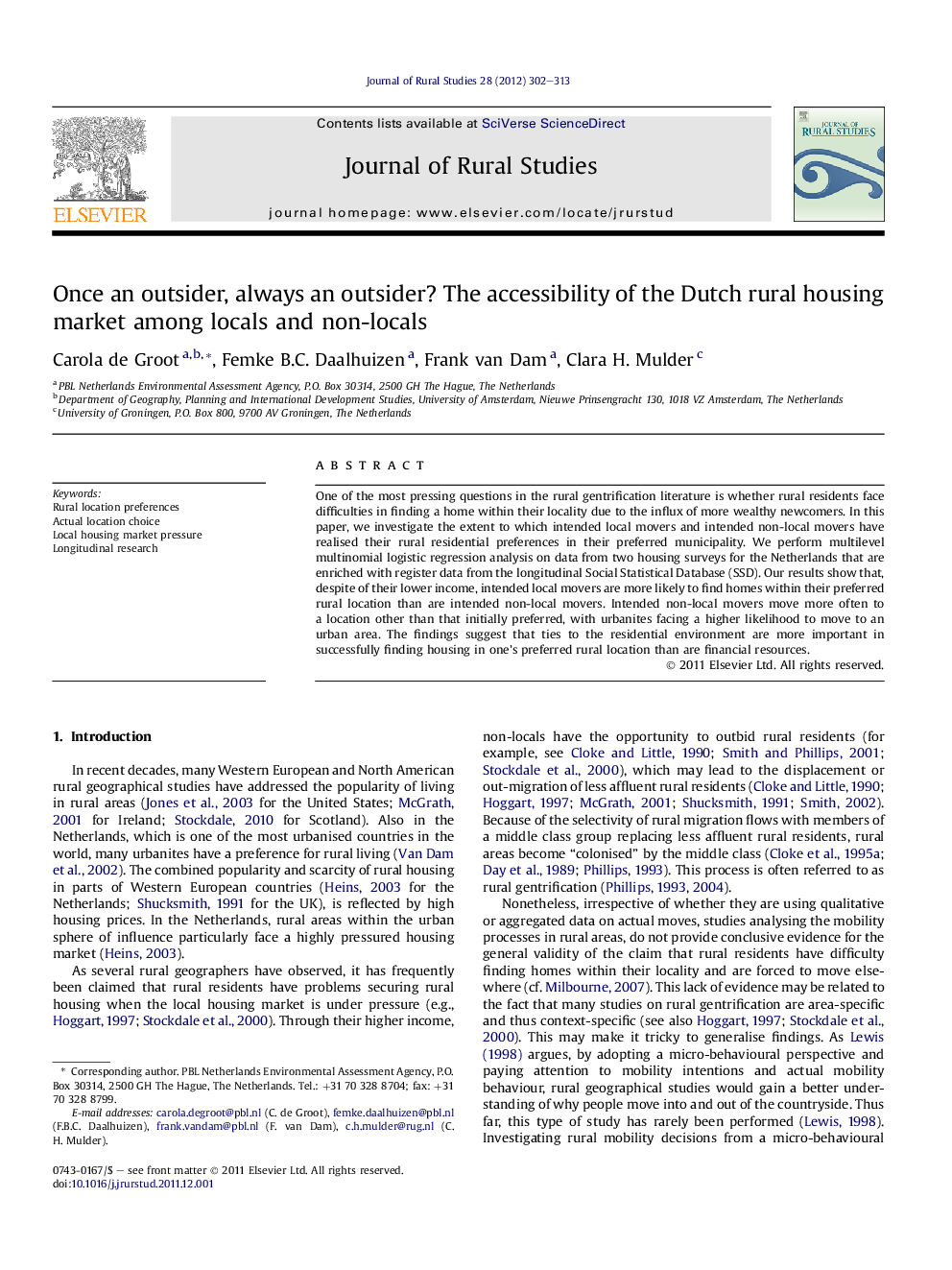| Article ID | Journal | Published Year | Pages | File Type |
|---|---|---|---|---|
| 92678 | Journal of Rural Studies | 2012 | 12 Pages |
One of the most pressing questions in the rural gentrification literature is whether rural residents face difficulties in finding a home within their locality due to the influx of more wealthy newcomers. In this paper, we investigate the extent to which intended local movers and intended non-local movers have realised their rural residential preferences in their preferred municipality. We perform multilevel multinomial logistic regression analysis on data from two housing surveys for the Netherlands that are enriched with register data from the longitudinal Social Statistical Database (SSD). Our results show that, despite of their lower income, intended local movers are more likely to find homes within their preferred rural location than are intended non-local movers. Intended non-local movers move more often to a location other than that initially preferred, with urbanites facing a higher likelihood to move to an urban area. The findings suggest that ties to the residential environment are more important in successfully finding housing in one's preferred rural location than are financial resources.
► In this longitudinal study, we examine the realisation of rural location preferences. ► We make a distinction between intended local movers and intended non-local movers. ► Intended local movers move more often to the preferred rural location than non-locals. ► This pattern is found in ‘popular’ as well as in ‘less popular’ rural areas. ► We find no support that locals are outbid by non-locals on the rural housing market.
